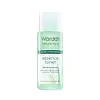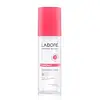What's inside
What's inside
 Key Ingredients
Key Ingredients

 Benefits
Benefits

 Concerns
Concerns

No concerns
 Ingredients Side-by-side
Ingredients Side-by-side

Water
Skin ConditioningGluconolactone
Skin ConditioningGlycerin
HumectantSqualane
EmollientDimethicone
EmollientSodium Citrate
BufferingDicaprylyl Carbonate
EmollientCyclopentasiloxane
EmollientArachidyl Alcohol
EmollientCetearyl Alcohol
EmollientPropanediol
SolventSclerotium Gum
Emulsion StabilisingBehenyl Alcohol
EmollientPhenoxyethanol
PreservativePolyacrylate Crosspolymer-6
Emulsion StabilisingMica
Cosmetic ColorantArachidyl Glucoside
EmulsifyingSynthetic Fluorphlogopite
Butylene Glycol
HumectantChlorphenesin
AntimicrobialTitanium Dioxide
Cosmetic ColorantDimethicone/Vinyl Dimethicone Crosspolymer
Skin ConditioningAllantoin
Skin ConditioningTocopheryl Acetate
AntioxidantVaccinium Macrocarpon Fruit Extract
AstringentParfum
MaskingHydrogen Dimethicone
Actinidia Polygama Fruit Extract
Skin ConditioningTin Oxide
AbrasivePotassium Sorbate
PreservativeSodium Benzoate
MaskingIsomalt
HumectantEuterpe Oleracea Fruit Extract
Trideceth-9
EmulsifyingPEG-40 Hydrogenated Castor Oil
EmulsifyingCallicarpa Japonica Fruit Extract
Skin ConditioningEthylhexylglycerin
Skin ConditioningLecithin
EmollientLycium Barbarum Callus Culture Extract
Skin ConditioningPolysorbate 20
EmulsifyingCI 17200
Cosmetic ColorantWater, Gluconolactone, Glycerin, Squalane, Dimethicone, Sodium Citrate, Dicaprylyl Carbonate, Cyclopentasiloxane, Arachidyl Alcohol, Cetearyl Alcohol, Propanediol, Sclerotium Gum, Behenyl Alcohol, Phenoxyethanol, Polyacrylate Crosspolymer-6, Mica, Arachidyl Glucoside, Synthetic Fluorphlogopite, Butylene Glycol, Chlorphenesin, Titanium Dioxide, Dimethicone/Vinyl Dimethicone Crosspolymer, Allantoin, Tocopheryl Acetate, Vaccinium Macrocarpon Fruit Extract, Parfum, Hydrogen Dimethicone, Actinidia Polygama Fruit Extract, Tin Oxide, Potassium Sorbate, Sodium Benzoate, Isomalt, Euterpe Oleracea Fruit Extract, Trideceth-9, PEG-40 Hydrogenated Castor Oil, Callicarpa Japonica Fruit Extract, Ethylhexylglycerin, Lecithin, Lycium Barbarum Callus Culture Extract, Polysorbate 20, CI 17200
Water
Skin ConditioningGlycerin
HumectantButylene Glycol
HumectantPropanediol
SolventBifida Ferment Lysate
Skin ConditioningAllantoin
Skin ConditioningSodium Polyacrylate Starch
Absorbent1,2-Hexanediol
Skin ConditioningChlorphenesin
AntimicrobialDisodium EDTA
Xanthan Gum
EmulsifyingSodium Hyaluronate
HumectantCaprylhydroxamic Acid
Citric Acid
BufferingMirabilis Jalapa Extract
Skin ConditioningDextran
Palmitoyl Tripeptide-8
Skin Conditioning
 Reviews
Reviews

Ingredients Explained
These ingredients are found in both products.
Ingredients higher up in an ingredient list are typically present in a larger amount.
Allantoin is a soothing ingredient known for its protective and moisturizingg properties. Because of this, it is often added to products with strong active ingredients.
Studies show higher concentrations of this ingredient can promote wound healing.
Though it can be derived from the comfrey plant, allantoin is produced synthetically for cosmetic products to ensure purity.
Learn more about AllantoinButylene Glycol (or BG) is used within cosmetic products for a few different reasons:
Overall, Butylene Glycol is a safe and well-rounded ingredient that works well with other ingredients.
Though this ingredient works well with most skin types, some people with sensitive skin may experience a reaction such as allergic rashes, closed comedones, or itchiness.
Learn more about Butylene GlycolChlorphenesin is a synthetic preservative. It helps protect a product against bacteria in order to extend shelf life. In most cases, Chlorphenesin is paired with other preservatives such as phenoxyethanol and caprylyl glycol.
Chlorphenesin is a biocide. This means it is able to help fight the microorganisms on our skin. It is also able to fight odor-releasing bacteria.
Chlorphenesin is soluble in both water and glycerin.
Studies show Chlorphenesin is easily absorbed by our skin. You should speak with a skincare professional if you have concerns about using Chlorphenesin.
Learn more about ChlorphenesinGlycerin is already naturally found in your skin. It helps moisturize and protect your skin.
A study from 2016 found glycerin to be more effective as a humectant than AHAs and hyaluronic acid.
As a humectant, it helps the skin stay hydrated by pulling moisture to your skin. The low molecular weight of glycerin allows it to pull moisture into the deeper layers of your skin.
Hydrated skin improves your skin barrier; Your skin barrier helps protect against irritants and bacteria.
Glycerin has also been found to have antimicrobial and antiviral properties. Due to these properties, glycerin is often used in wound and burn treatments.
In cosmetics, glycerin is usually derived from plants such as soybean or palm. However, it can also be sourced from animals, such as tallow or animal fat.
This ingredient is organic, colorless, odorless, and non-toxic.
Glycerin is the name for this ingredient in American English. British English uses Glycerol/Glycerine.
Learn more about GlycerinPropanediol is an all-star ingredient. It softens, hydrates, and smooths the skin.
It’s often used to:
Propanediol is not likely to cause sensitivity and considered safe to use. It is derived from corn or petroleum with a clear color and no scent.
Learn more about PropanediolWater. It's the most common cosmetic ingredient of all. You'll usually see it at the top of ingredient lists, meaning that it makes up the largest part of the product.
So why is it so popular? Water most often acts as a solvent - this means that it helps dissolve other ingredients into the formulation.
You'll also recognize water as that liquid we all need to stay alive. If you see this, drink a glass of water. Stay hydrated!
Learn more about Water